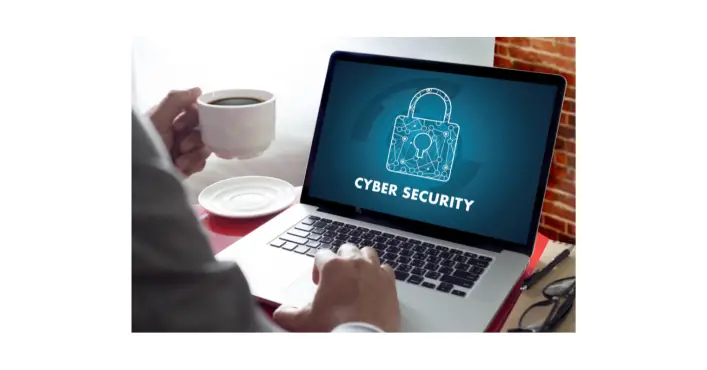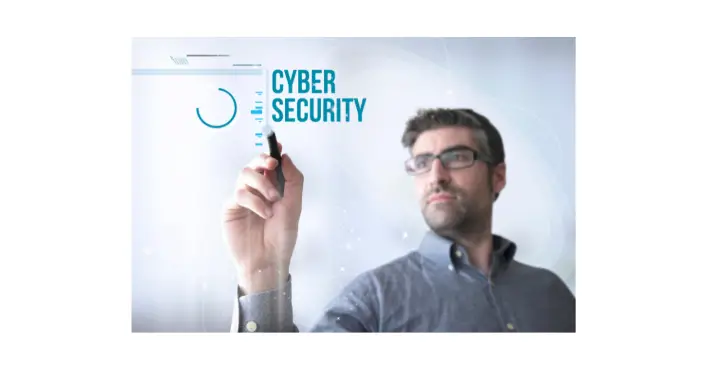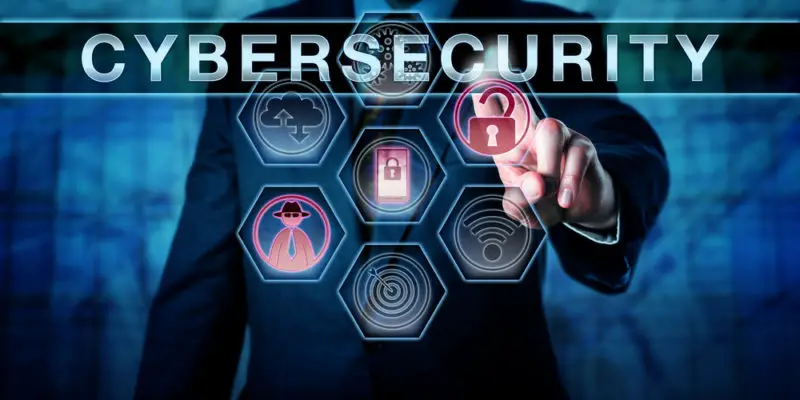In cyber security risk analysis and management, it is increasingly challenging for organizations to manage cyber risk across their organizations. Keeping systems protected may seem daunting even to the skilled team today and security risk management.
In the face of today’s ever-evolving cyber landscape, mastering the Cyber Risk Management Lifecycle is a must for any organization. Depending on the organization’s risk posture, program protection planning, and risk determination.
In this blog post, we’ll guide you through each lifecycle phase. We’ll help you identify risks, assess them, and devise an effective risk management strategy. You’ll also learn how to respond swiftly and efficiently to threats and the importance of ongoing monitoring.
With a strong focus on collaboration and the development of a robust cybersecurity risk management plan, this guide will equip you with the tools and knowledge you need to navigate the digital minefield.

Phases of the Cybersecurity Lifecycle
The five functions within the Cyber Security Framework: Identifier, Protection, Detect, Response, and Recovery have been defined in the framework models and are built from the framework models and system development life cycle.
Security teams will develop system entities of organizational operations through root cause analysis of critical business functions.
The system and five functional areas provide the basis for an integrated cybersecurity plan and are at the core of all of its framework components.
In addition, the technology helps businesses express their cyber risk management effectively by enabling risk management.
In reality, this role parallels the cybersecurity lifecycle and follows nist risk management framework.
The cybersecurity lifecycle is a continuous process encompassing five crucial phases: identifying risks, assessing them, identifying possible mitigation measures, responding, and ongoing monitoring.
The Cyber Risk Management Lifecycle is a continuous process that demands constant vigilance. Its five phases are:
- Identifying Cybersecurity Risks
- Assessing Cybersecurity Risks
- Identifying Possible Cybersecurity Risk Mitigation Measures
- Responding to Cybersecurity Risks
- Ongoing Monitoring
Identify Cybersecurity Risks
Your first step in managing cyber risk is to identify potential threats. This involves understanding your IT infrastructure, mapping your data flows, and recognizing vulnerabilities.
You’ll need to stay abreast of the latest cyber threats and understand how they could potentially impact your organization. Remember, threats can come from both outside and within your organization.
Dive deep into your organization’s IT infrastructure. Know it like the back of your hand. Where does your data flow? Where could vulnerabilities hide? In this phase, you’ll also need to keep your fingers on the pulse of emerging cyber threats. Remember, threats can be external or internal, so leave no stone unturned.
Assess Cybersecurity Risks
Once you’ve identified potential threats, the next step is risk assessment. This involves evaluating the potential impact of each identified risk and ranking them based on severity.
Consider factors such as the likelihood of a risk event occurring, and the potential damage it could cause, and determine how critical the affected systems are to your operations.

Identify Possible Cybersecurity Risk Mitigation Measures
Armed with knowledge about your risks, you can now identify potential mitigation measures. These remediation efforts may include implementing new security controls, strengthening existing controls, or changing business processes. Remember, no organization can eliminate all risks; the goal is to reduce them to an acceptable level.
Respond
Upon detection of a threat, you must act swiftly to minimize its impact. Your response should be proportionate to the level of the threat and in line with your predefined incident response plan. This might include isolating affected systems, removing threats, and recovering lost data.
Use Ongoing Monitoring
Cyber risk management is an ongoing process, not a one-time event. Regularly monitoring your systems will help you detect anomalies that could indicate a security breach. Employ tools such as intrusion detection systems, log analyzers, and security information and event management (SIEM) systems to aid this process.
Collaboration
Managing cyber risk requires a collaborative approach. Engage with all stakeholders, including management, and IT staff, and integrate security, and even end-users, to ensure a holistic risk management approach.
Develop a Cybersecurity Risk Management Plan
Let’s take a closer look at every phase of your cybersecurity information security management strategy.
Step 1: Identify and Understand Your Assets
Start by creating an inventory of all your digital assets, which could include software, hardware, data, legacy systems, and technologies. Understand the role of each asset in your organization’s operations, its value, and its potential vulnerabilities.
Step 2: Identify Cybersecurity Risks
Once you’ve mapped out your assets, it’s time to identify potential risks. This involves recognizing both external and internal threats that could exploit the vulnerabilities in your new and legacy systems. Stay abreast of the latest cyber threats and understand how they could impact your organization.
Step 3: Assess Cybersecurity Risks
Assess the identified risks based on their potential impact and the likelihood of them happening. This step involves evaluating the consequences if a threat exploits a vulnerability and the likelihood of this event occurring. Prioritize the risks based on risk assessments made on this assessment.
Step 4: Develop Cybersecurity Risk Mitigation Measures
After assessing the risks, develop strategies to manage them. This could involve implementing new security measures, enhancing existing ones, changing business processes, or transferring risk. Remember, the goal isn’t to eliminate all risks but to reduce them to an acceptable level.
Step 5: Create an Incident Response Plan
An incident response plan outlines the actions to be taken in the event of a security breach. This should include steps to identify and contain the breach, eradicate the threat, recover from the incident, and learn from it to prevent similar incidents in the future.
Step 6: Implement Your Plan
Put your Cybersecurity Risk Management Plan into action. This involves not just the implementation of technical measures but also training your staff to ensure they understand their roles in maintaining cybersecurity.
Step 7: Monitor and Review
Regularly monitoring your systems is crucial to detect potential breaches and assess the effectiveness of your risk management measures. Review and update your plan regularly to ensure it remains relevant in the face of evolving threats.
Step 8: Continual Improvement
Cyber risk management is not a one-time process. It requires continual improvement. Learn from any incidents and feedback, and continually update your plan to ensure it remains effective.

Critical Capabilities for Managing IT Risk Management Framework
The Risk Management Framework (RMF) provides a structured approach to managing IT risks. Key capabilities include risk identification, assessment, response, management activities, monitoring, and governance. The RMF also emphasizes continuous monitoring and improvement.
The Risk Management Framework (RMF) provides a structured approach to identifying, assessing, and managing IT risks. Here are the critical capabilities you need to effectively manage an IT Risk Management Framework:
Risk Identification: This is the starting point of the RMF. You must have the ability to identify potential risks that could impact your IT infrastructure. This involves understanding your IT environment, keeping up with the latest threats, and recognizing vulnerabilities.
Risk Assessment: Once potential risks are identified, you must be capable of assessing them. This involves analyzing the likelihood and impact of each risk and prioritizing them based on their severity.
Risk Response: This capability involves deciding on the best course of action to address each risk. Responses could include accepting, mitigating, transferring, or avoiding the risk. The chosen response should be in line with your organization’s risk appetite.
Risk Monitoring: This capability involves continuously keeping an eye on identified risks, tracking them, and reporting any changes. This is important because the likelihood and impact of a risk can change over time.
Risk Governance: This is about setting the direction for how risk is managed in the organization. It involves establishing a risk management policy, setting risk appetite, and providing oversight.
Continuous Improvement: Cyber threats constantly evolve, so your RMF must evolve too. This capability involves regularly reviewing and improving your risk management processes.
Communication: Effective communication is vital in managing risk. This includes reporting to make risk management decisions and ensuring all stakeholders understand their roles and responsibilities in managing risk.
Integration: Your RMF should not stand alone. Instead, it should be integrated with other processes, such as incident management, business continuity management, and IT governance.
Senior management support: Senior management support is essential for the success of any IT risk management program. This support should be visible and ongoing, and it should be communicated to all employees.
Employee engagement: Employee engagement is essential for the success of any IT risk management program. Employees must understand their role in managing risk and be empowered to report security incidents and concerns.
Technology: Technology can play a vital role in supporting IT risk management. Tools and solutions can help organizations automate tasks, improve visibility into risk, and make it easier to manage risk.
Continuous improvement: IT risk management is an ongoing process. Organizations need to continuously assess their risk environment and make adjustments to their risk management program as needed.
The RMF Steps
The RMF involves six steps: categorize, select, implement, assess, authorize, and monitor. Each step requires specific actions and outputs, contributing to the overall risk management effort.
The Roles Internal Compliance and Audit Teams Play in IT Risk Management Framework
Internal compliance and audit teams play a crucial role in the IT risk management framework. They ensure adherence to internal policies and external regulations, validate the effectiveness and integrity of implemented controls, and provide independent assurance to management and stakeholders.
Versatile Reporting
Effective reporting is key to managing cyber risk. Reports should be tailored to the audience, with technical details for IT staff and high-level summaries for management. They should provide clear insights into the risk profile, effectiveness of controls, and areas requiring improvement.
Collaboration and Communication Tools
Effective collaboration and communication are essential for managing cyber risk. Use tools like shared dashboards, intranet platforms, and project management software to facilitate information sharing and coordination among your team. Regular meetings and briefings can also ensure everyone is on the same page.

Cybersecurity RMF Conclusion
The Cyber Risk Management Lifecycle is a continuous, iterative process that requires regular review and adjustment in response to the ever-changing cyber threat landscape. You can effectively manage your organization’s cyber risks through risk identification, assessment, and mitigation.
The Risk Management Framework (RMF) provides a structured approach to this process, with internal compliance and audit teams playing a critical role in ensuring its effectiveness.
Using effective reporting and collaboration tools further enhances the effectiveness of your risk management efforts, ensuring that all stakeholders have the information they need to make informed decisions.
Remember, managing cyber risk is not a one-time event but a continuous process that requires ongoing monitoring and improvement.
In conclusion, the Cyber Risk Management Lifecycle is essential to an organization’s overall cybersecurity risk management framework and strategy. By understanding and implementing the phases of this lifecycle, you can greatly enhance your organization’s cybersecurity posture and resilience in the face of ever-evolving cyber threats.

Chris Ekai is a Risk Management expert with over 10 years of experience in the field. He has a Master’s(MSc) degree in Risk Management from University of Portsmouth and is a CPA and Finance professional. He currently works as a Content Manager at Risk Publishing, writing about Enterprise Risk Management, Business Continuity Management and Project Management.

